Anyway, this will outline my experiences swapping a crappy modern age plastic end-tank radiator for a more robust all aluminum radiator. Difficulty ranges from a 1 to a 4... depending on the quality of the replacement radiator you get.
So here we go:
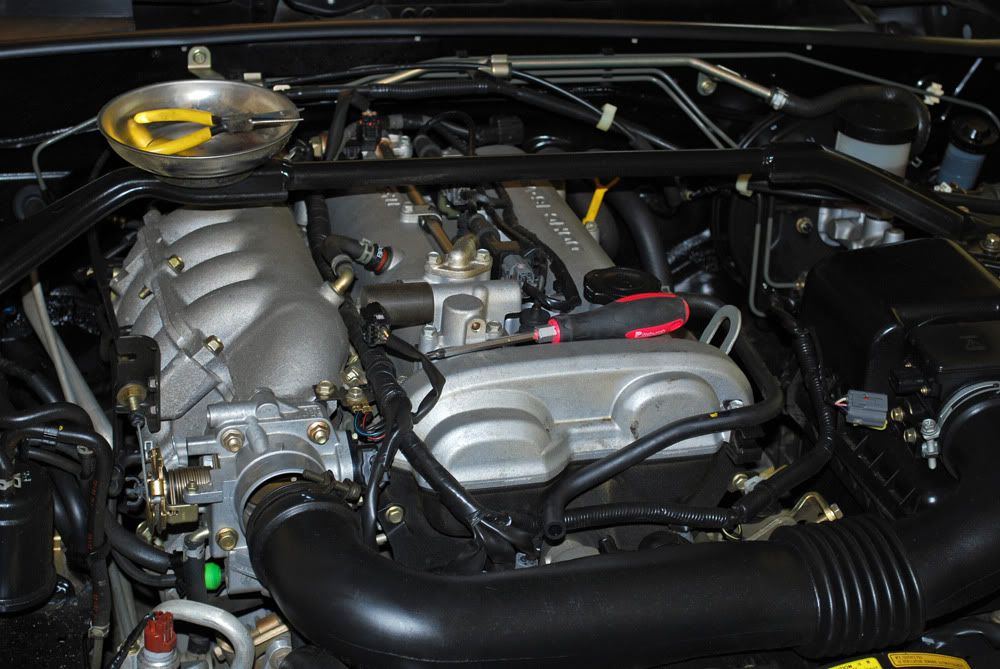
I started by removing my intake tube. This is done by loosening the clamp holding it on to the throttle body, pulling off one of the hoses going from the intake tube to the valve cover, and unplugging the associated sensors from their respective wiring harnesses. You will also have to remove the harness clips that hold the wires to the intake themselves. I did this by squeezing the back side of them with some needle nose pliers, and pulling them out (your basic snap-fit design). I suppose you could also loosen the hose clamp holding the intake tube to the MAF/filter box, and just remove the tube... but I also wanted to check my filter and a few other things... so it just worked out this way.
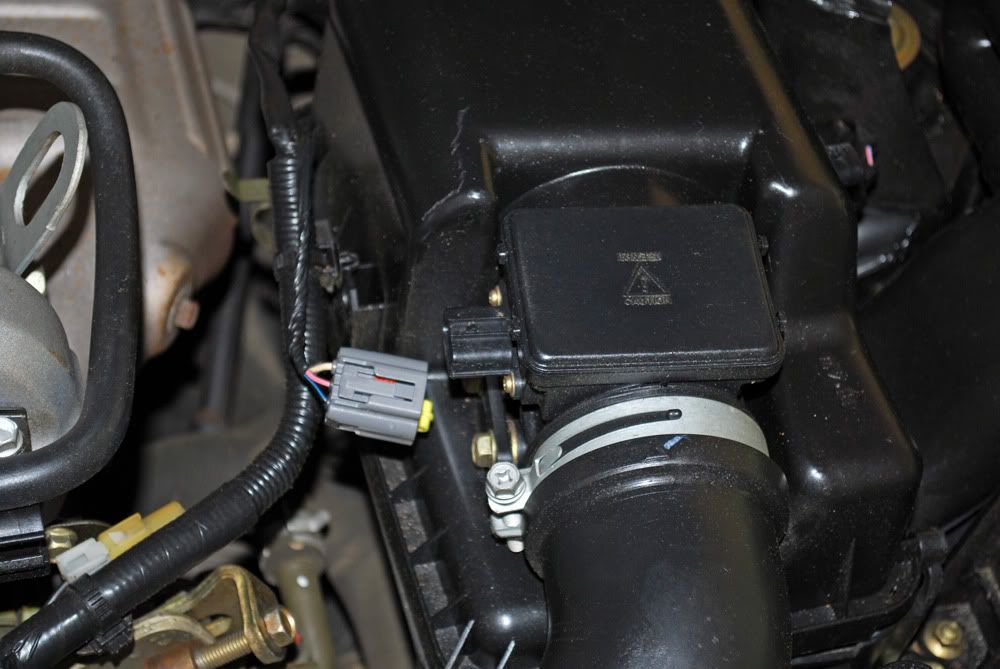
Next up, remove the electric fans. I did the driver's side first so that there was plenty of room to get at the passenger side one when the time came. The driver's side just has the 1 electrical connection, the harness anchors, and 2 bolts that hold it to the radiator. Remove all that stuff and it should just lift right out.
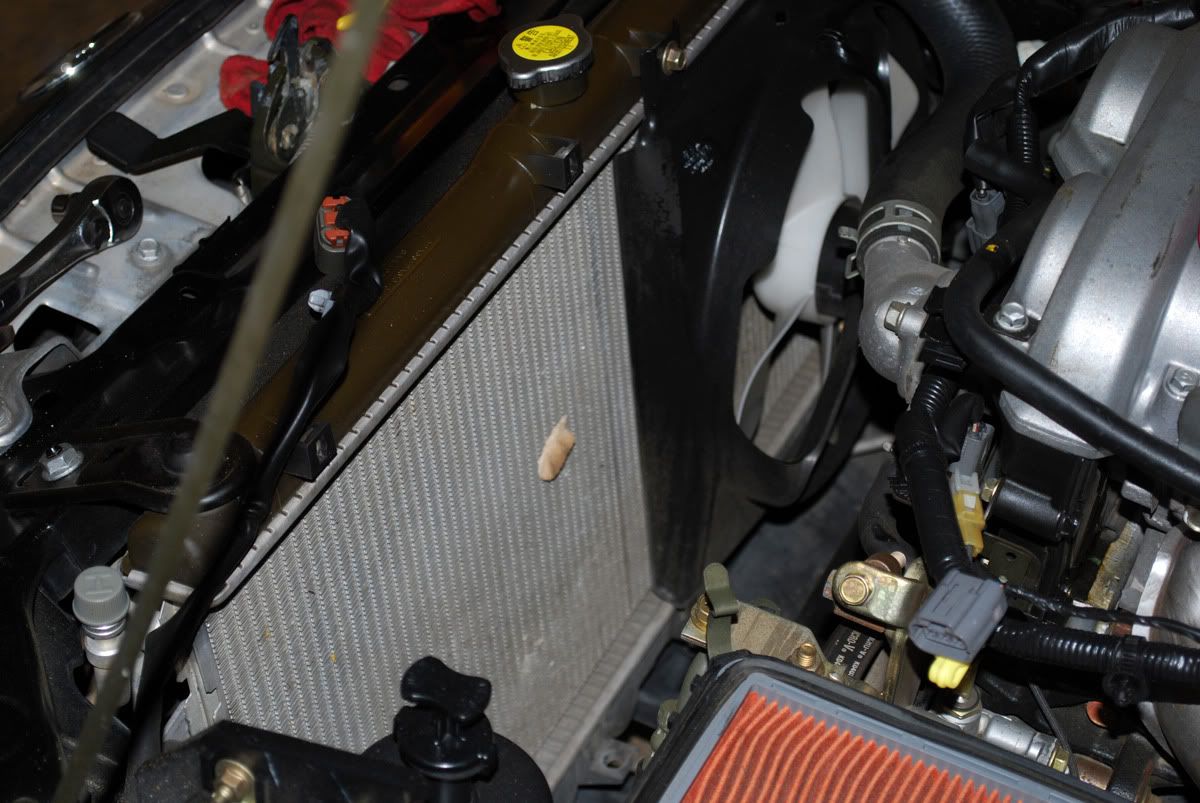
Next up is the passenger side. This one, you can leave the harness anchors attached to the fan, but you'll have to unplug the 1 white connection using a flathead screwdriver to lift up on the little clip thingy.

In addition to the 2 bolts up top (as on the driver's side), there are 2 bolts on the bottom of the fan as well. Remove them and slide the fan assembly out under the radiator hose to the driver's side, and lift it out.
Next, place a catch can under the car to catch the sea of coolant that will inevitably spill everywhere. Squeeze the hose clamp on the lower radiator hose using some sort of wide pliers. Slide it back on the hose and pull the hose off the radiator outlet.
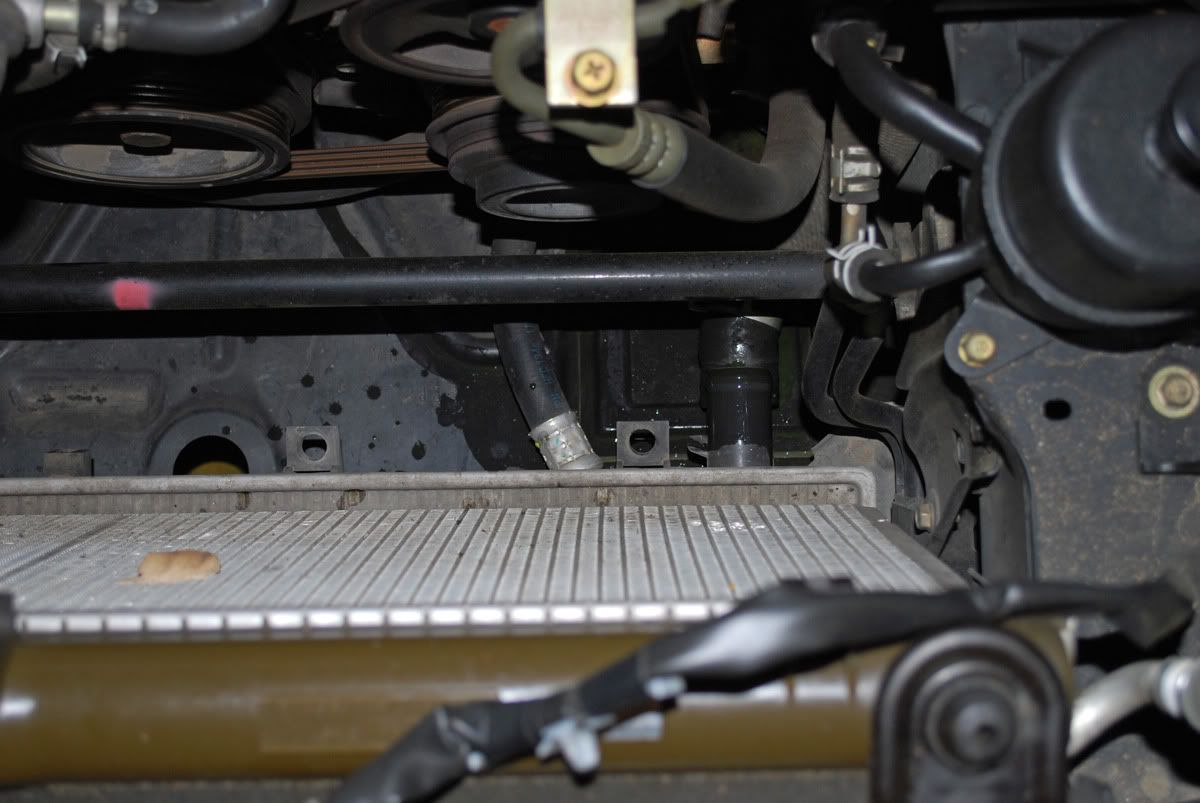
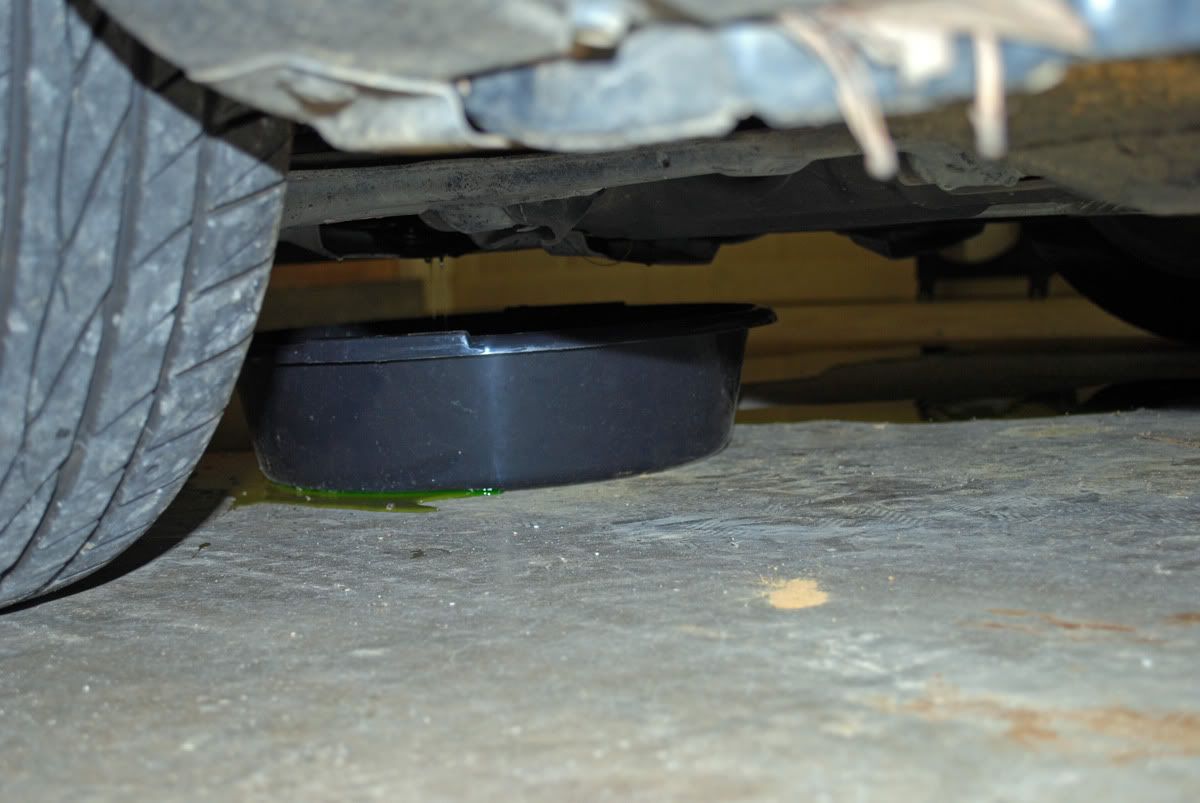
Do the same for the upper hose. There shouldn't be much coolant coming out of that one at this point. After the upper hose is pulled off, remove the hose going to the overflow tank. Remove the nut from each of the upper radiator mounts. The radiator should just pull right out. Time invested to this point? About 15 - 20 minutes. The car is extremely easy to work on.
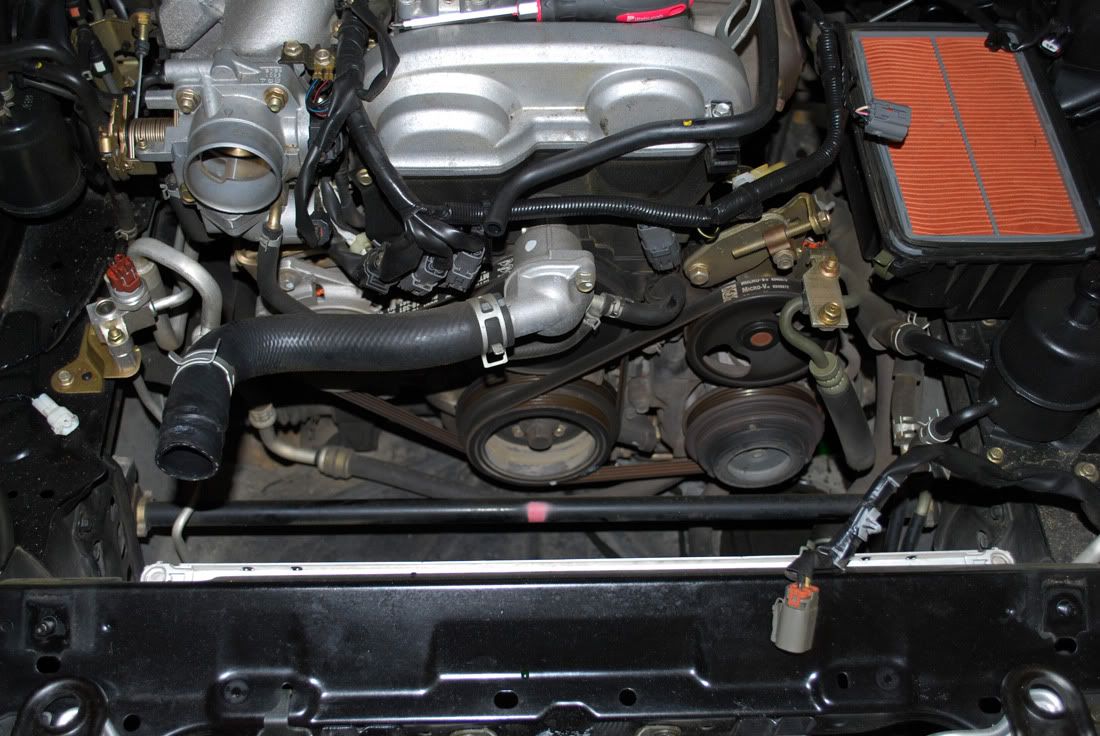
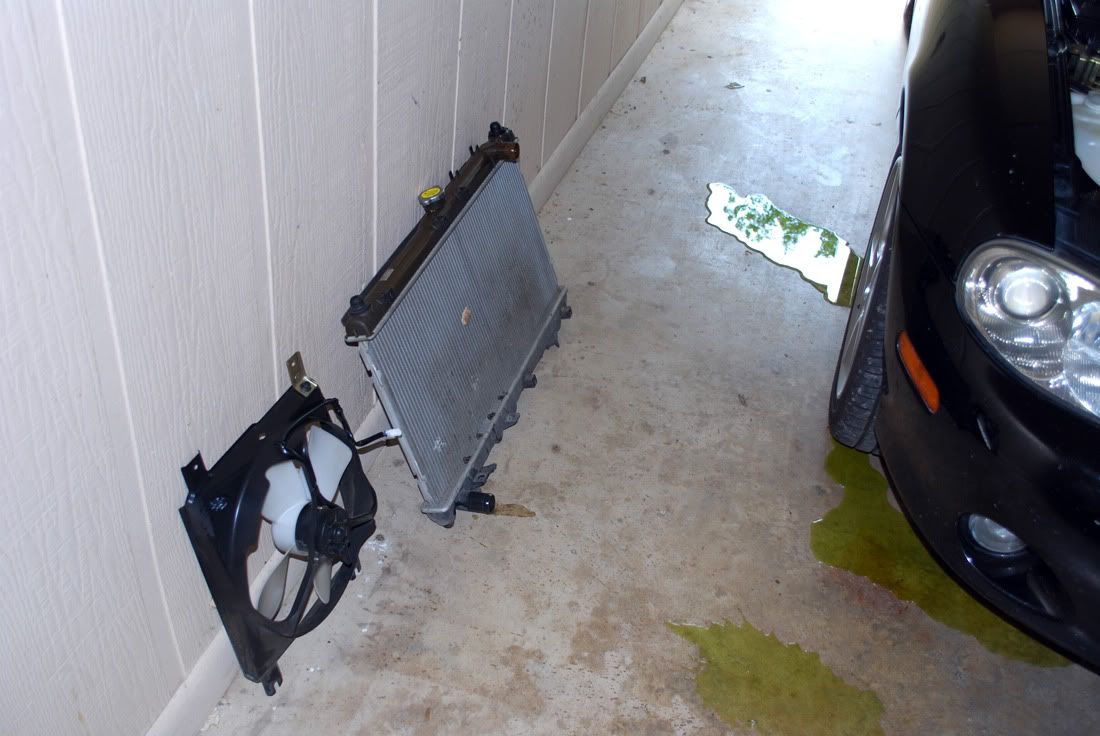
Now grab the new radiator and flush it out with water (in all the ports) to remove any packing material that may be stuck in there... or whatever else might have come from China or wherever the hell the damn thing was made.
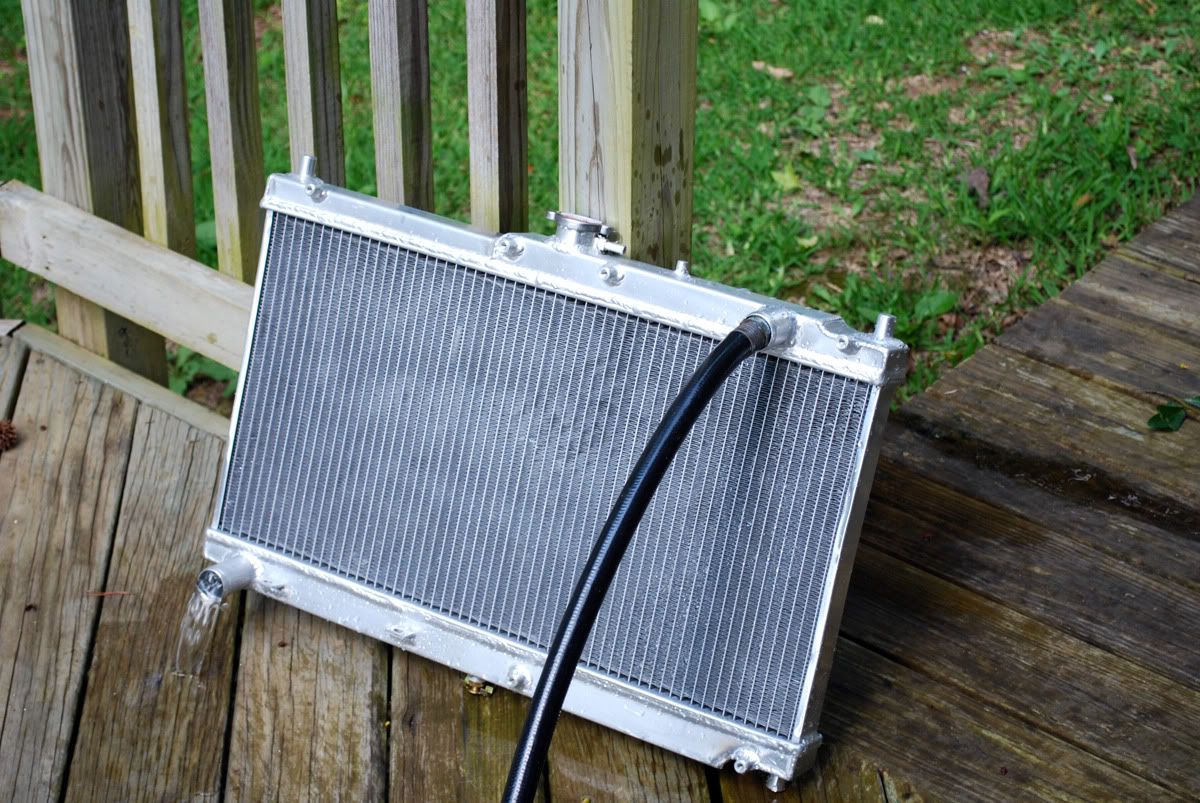
Remove the bushings from the top and bottom of the old radiator and put them on the new ones.
At this point, installation should be reverse of installation. I started by removing some stupid chain that was attached to the radiator cap and anchored to the radiator... dunno why it's there (so you don't lose the radiator cap?).
Now put the radiator in the car. The 2 lower bushings are supposed to engage 2 holes that are attached to brackets. Mine did not. At this point you realize you bought some cheap Chinese made piece of s***, and that this 45 minute job is now going to turn into a 3+ hour job. You also realize that no matter what a vendor says, "direct replacement, no modifications necessary" is a complete lie when dealing with an Ebay/aftermarket company.
So anyway, I pulled the radiator back out and removed the rubber bushings in an attempt to gain enough wiggle room... evidently it wasn't enough because it still didn't fit.
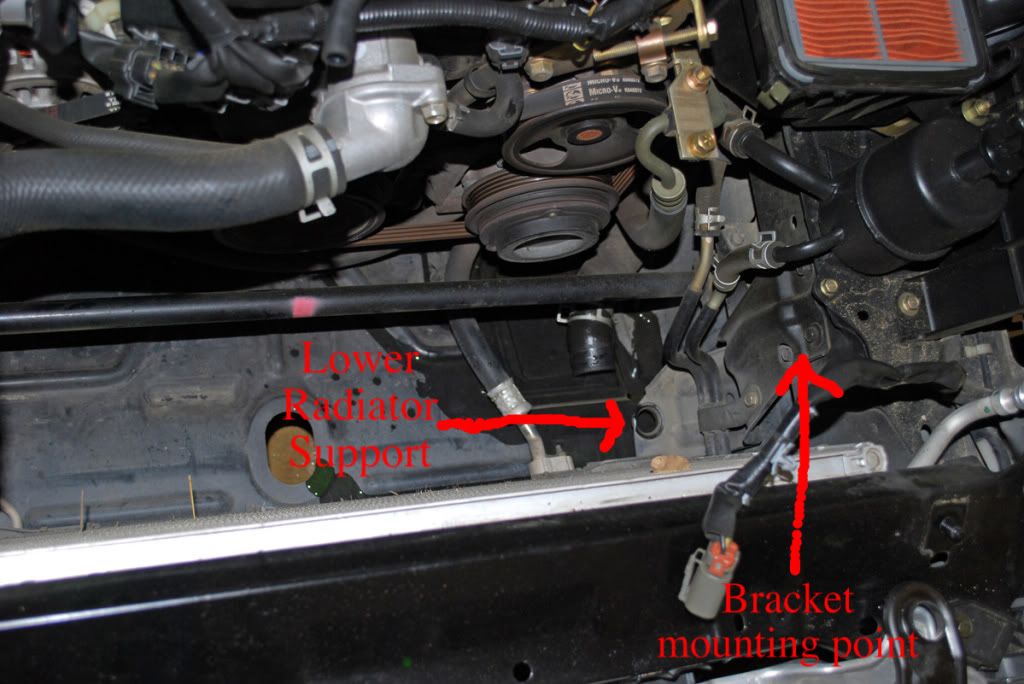
At this point I had to remove the bolts holding the bracket on and put some washers behind it to shim it towards the center of the car (the direction I needed to go in order to get it to fit). I left it loose, as well as loosened the other side to get optimum wiggle room. It dropped into the mounts, and I tightened up the lower brackets. Bolt down the upper mounts and make sure everything fits correctly to this point (everything might be shifted to one side or something). Re-install the lower radiator hose and slide the clamp up the flange.
Now install the passenger side fan. Install the lower bolts first (very loosely). This will act as a guide for the fan. The lower supports on the fan are slotted and open, so you just slide it on to those bolts, and then swing the fan forward, so its flush with the radiator. Tighten the lower bolts evenly, as well as the upper bolts. The incredibly quality control of the Chinese-made radiator once again played a role at this point. One of the upper fan mounts was all sorts of out of whack. Luckily, those crafty Japs at the Mazda R&D department anticipated this, and designed that mounting tab on the fan so that it could move/pivot a little bit... accommodating their Asian neighbors. Loosen that 1 bolt and move the tab where you need it. Tighten down all the mounts and re-install the upper radiator hose.
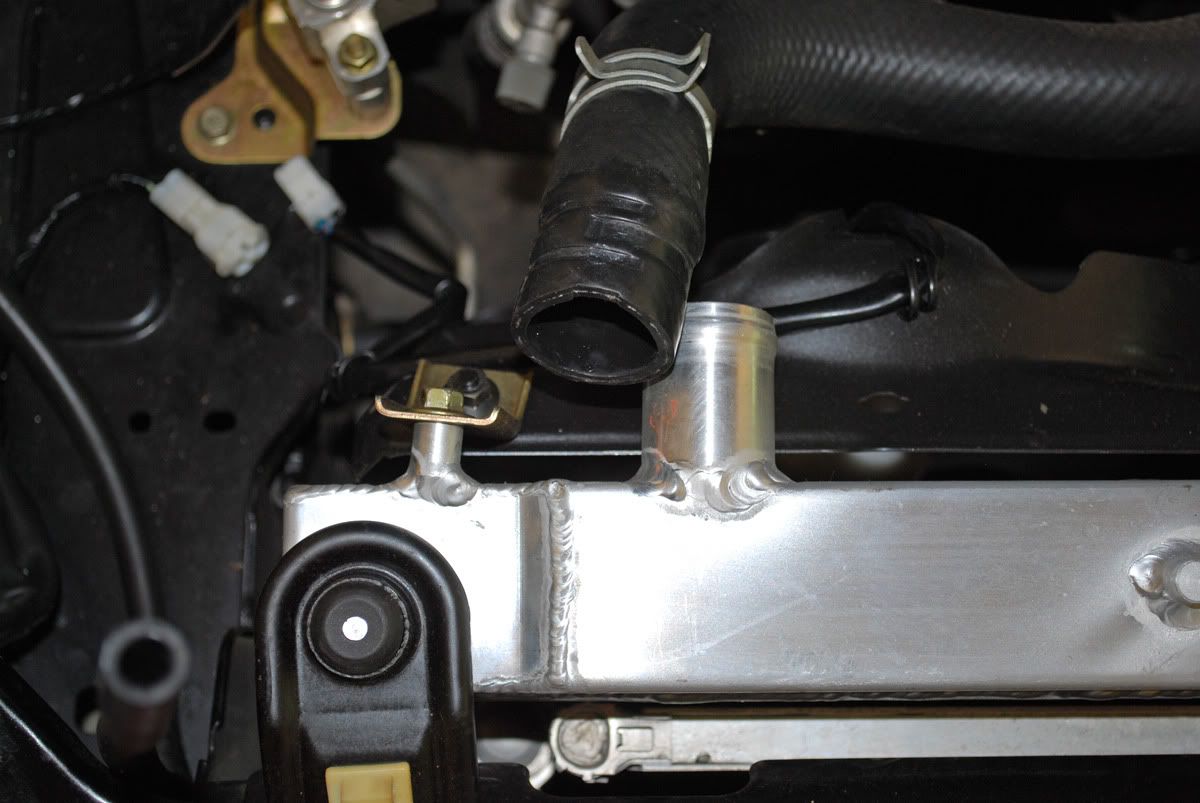
Now onto the driver's side fan. This is what caused me the most headaches. The lower support tabs were WAY out of whack. Something like a full .5-1" away from where they were supposed to be... and slightly bent. The Chinaman at the assembly plant didn't feel it necessary to weld these in the correct location, and the Chinese Engineer didn't feel it necessary to anticipate his brother's carelessness, and slot the mounting holes... so I had to get crafty. This pic was taken about halfway through the slotting process.
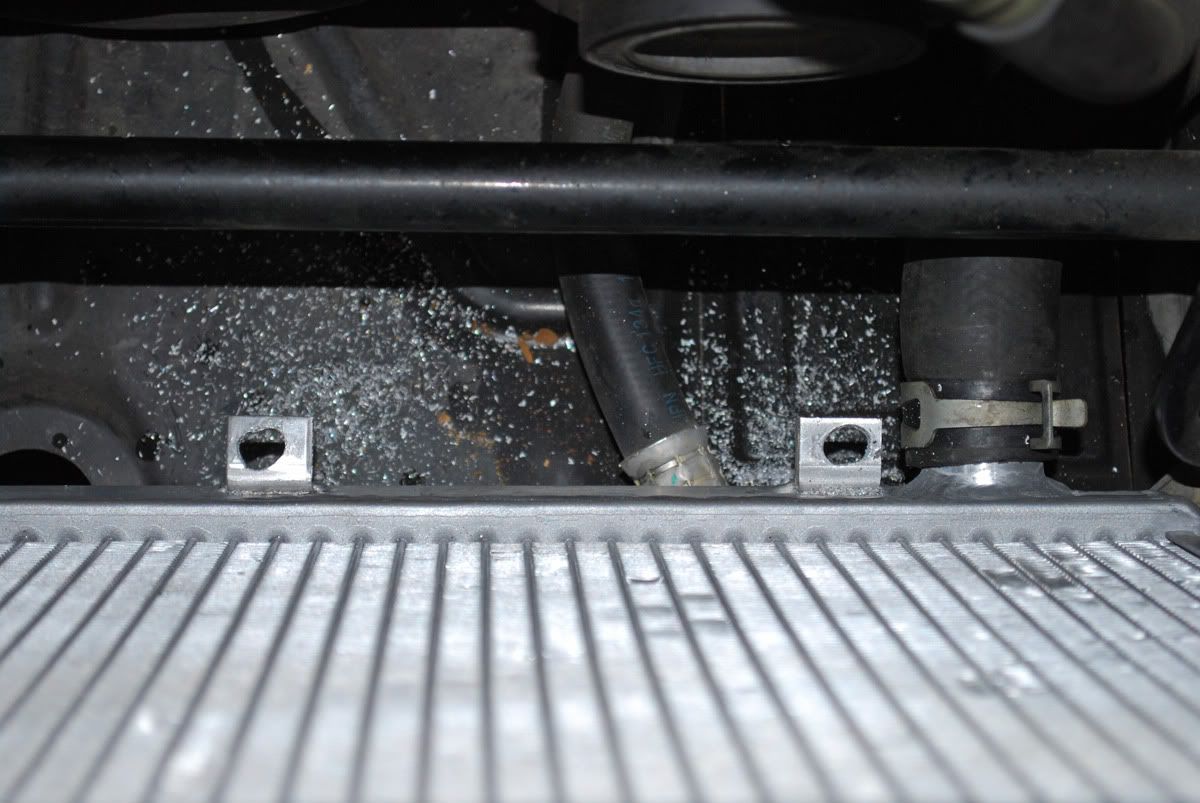
I ended up having to go almost to the end of the mounting tab... coming really close to actually punching through the side wall. MAKE SURE YOU HAVE YOUR LOWER RADIATOR HOSE ATTACHED IF YOU DO THIS! You do NOT want to get metal shavings in your cooling system. I also had to slot the upper bolt holes on the fan in order to get it to fit (although not THAT much)
Tighten all your bolts, re-install the intake tube, reconnect all your electrical connections and harness anchors. Fill the radiator with coolant and distilled water while massaging the upper radiator hose. I went with about a 60/40 mixture (60% distilled water). Start the car up and check for leaks. Let it warm up completely until the thermostat opens, and make sure there are no air bubbles in the system, and it doesn't overheat.
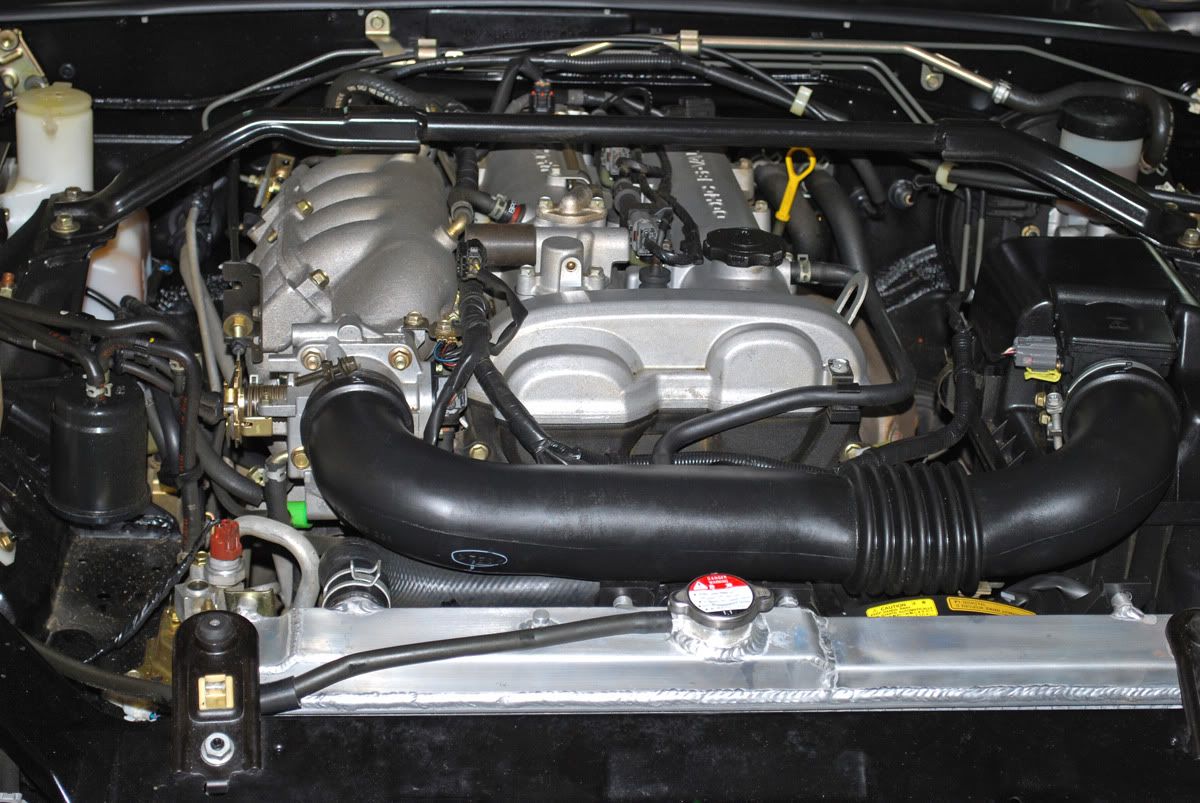
DONEZO!!!


